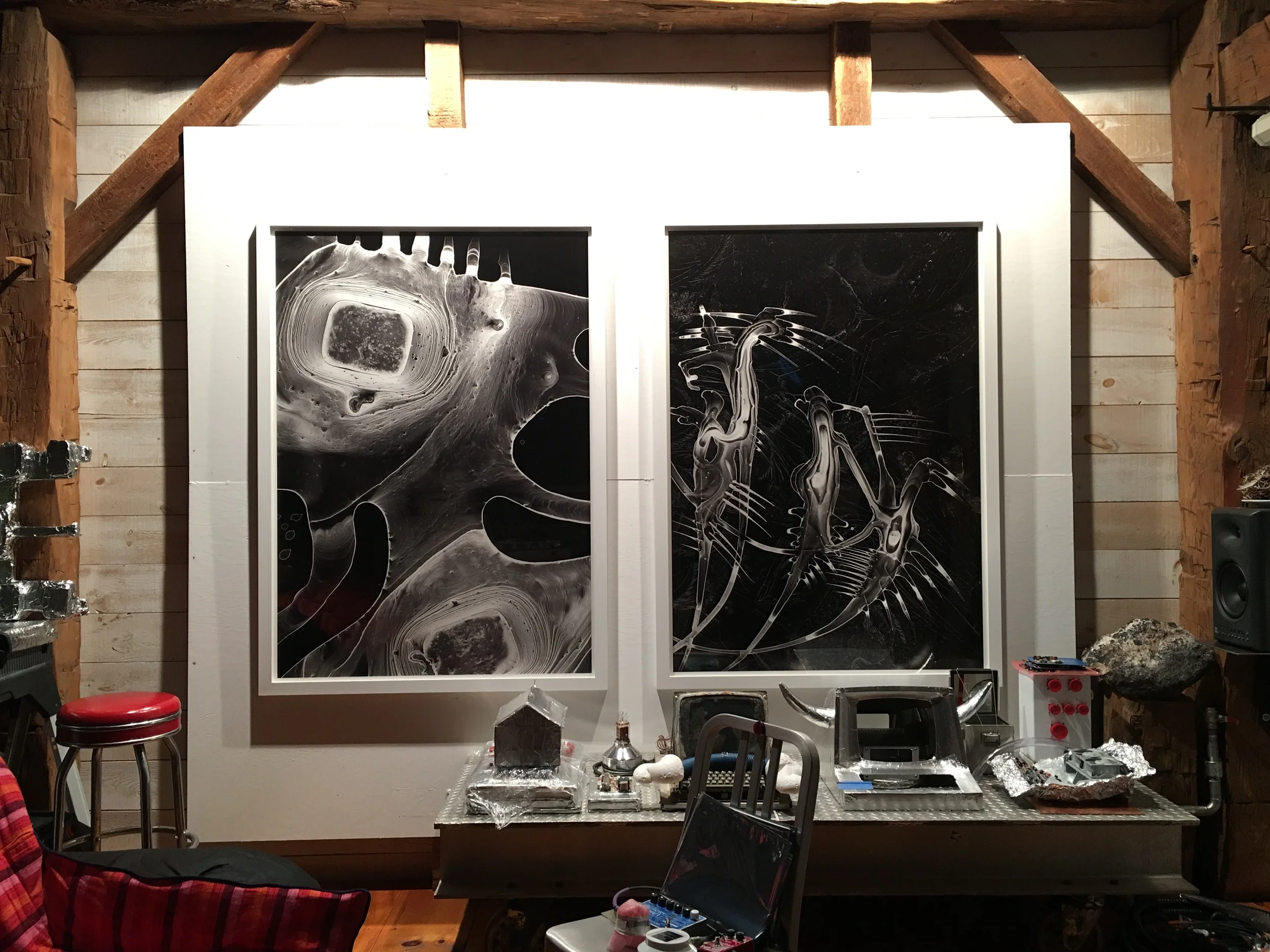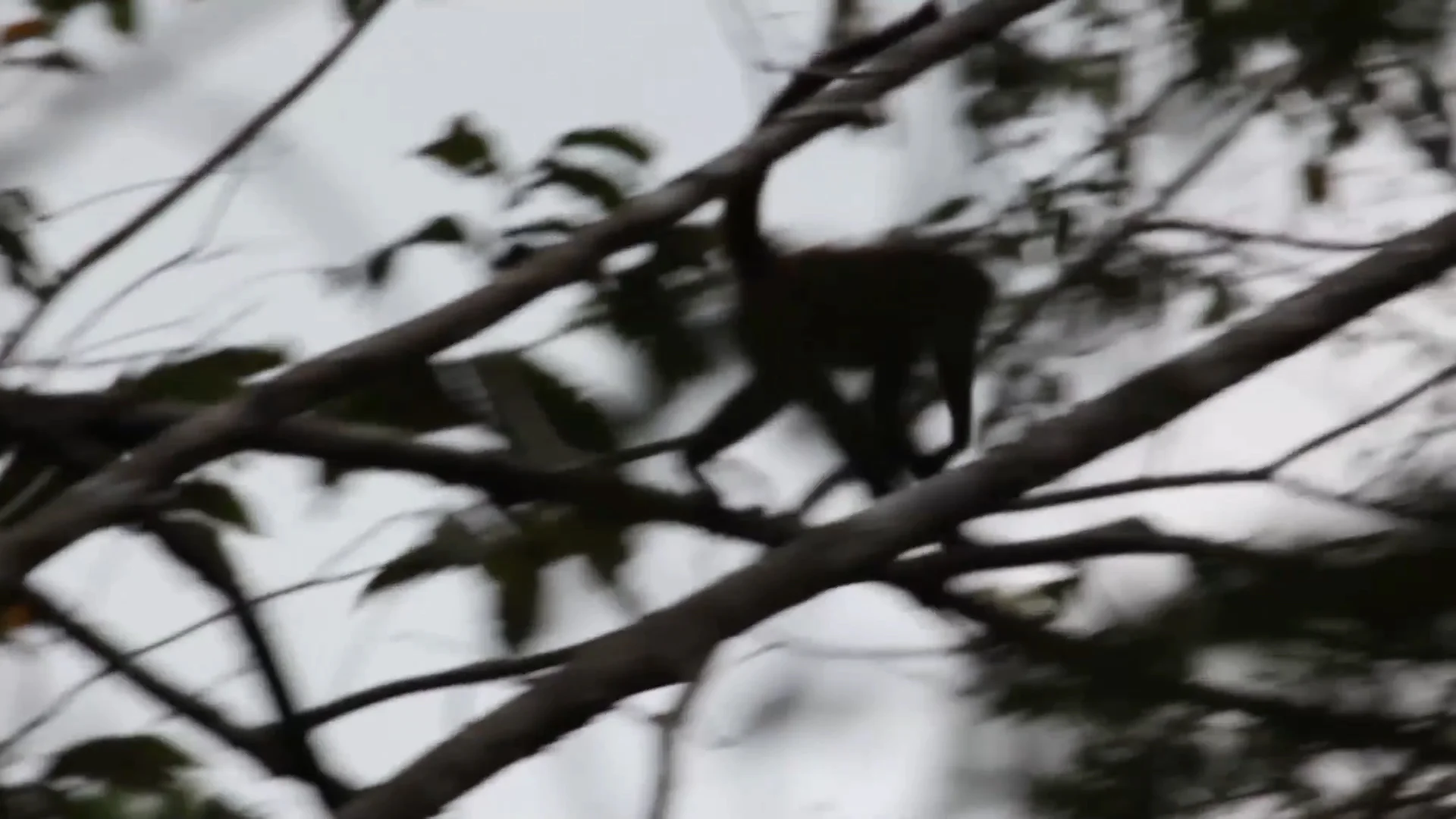










New Page
New Page
2024 Exhibition Pitchdeck. Please click Full Screen icon and scroll right / left. More information and imagery coming soon.

FIELD STATION 4
FIELD STATION 4
FIELD STATION 4
FIELD STATION 4
FIELD STATION 4 is comprised of 140 salvaged military cases from US adventures in Iraq and Afghanistan. These time capsules contain and conflate art, custom electronics, motion sensors, Tibetan artifacts from 15th and 19th centuries, rare fluorescent minerals collected in Greenland, kilometers of fiber optic cables, a digital countdown clock, gold leafed horseshoe crabs, real time surveillance cameras, weather balloons, a likeness of ‘Ham’ the astro-chimp, EMO emergency off switches, biotech devices. Re-purposed, re-synthesized: speculative fiction manifested. Sounds of whales, elk, howler monkeys, shrimp and machinery emanate, altered. FS4 probes the rough edges of human perception and notions of reality itself — in a university town, in a state where evolution is suspect. FIELD STATION 4 installation opened fall 2019. Its planned 11 month run was cut short by the pandemic. Mariana Kistler Beach Museum of Art at Kansas State University > Thank You for supporting my research !! So Grateful.

Recipes for the Mind
RECIPES FOR THE MIND
Recipes for the Mind
RECIPES FOR THE MIND
Recipes for the Mind arrives as a somnambulist’s eruption of feverish word clouds merging with image artifacts from Charles Lindsay’s off-the-beaten-path life. His hybrid mode of expression integrates the phenomena of seeing with observations on art, technology, consumption, near death experiences, encounters with wildlife, psychedelics, time travel, failure and courage, artificial intelligence, and the challenge of photo-based storytelling in an image-saturated world. Time and space have collapsed in these re-synthesized images: treated like scores, manipulated by hand, they travel from their original form to the analog, to the digital, and back to ‘real’ photographs again. This manual bending of time integrates the 108 pictures and their corresponding words into a third trans-temporal space. (Thank You Kickstarter Supporters)
“Like the most intrepid astronauts and the most audacious philosophers, Lindsay goes farther and deeper than most of us dare even to imagine. Always astonishing, his images and language provide passages to realms he’s discovered, enticing viewer and reader to expand their own explorations.
—Jonathon Keats, conceptual artist, art critic
Charles Lindsay’s hybrid practice stirs a lifetime of images, words, experiences and chemistry into a slurry of glitchy, trippy beauty. The results of this process are laid out in Recipes for the Mind; a book where text and image actively swap each other’s DNA, creating a variety of strange forms and slippery new meanings.
—Fred Tomaselli, artist

WIND TUNNEL: the Hongshan Experiment
WIND TUNNEL: the Hongshan Experiment
WIND TUNNEL: the Hongshan Experiment
WIND TUNNEL: the Hongshan Experiment
Wind Tunnel: the Hongshan Experiment is a collaborative work realized through partnership with Chinese artist Shaoyu Su. I met Shaoyu at CalArts where he was a graduate student when I lectured there. This installation was commissioned by The Today Art Museum in Beijing as part of the .zip show. It integrates our shared interests in deep time, ancient history, far futures and the phenomena of technology. Wind tunnels are utilized by the aerospace industry to study aerodynamics. Expanding upon my experiments with sound and convolution reverb in the world’s largest wind tunnel at NASA Ames, our wind tunnel is a device for artistic research. Here aural information connects divergent epochs, adding a sonic stratigraphy to the visceral experience. Wind becomes a medium for commentary on what is invisible - a metaphor for the flow of ideas, data, and time itself. In this installation wind also becomes a visceral, haptic medium - literally touching the museum audience.
Future Human, located in the Wind Tunnel's middle chamber, is a CnC sculptural work derived from one of my “CARBON” negatives, which Shaoyu transformed from microscopic data into both ambiguous topography and future artifact.
Future Paradox, located in the third chamber, references the Fermi Paradox. Named after physicist Enrico Fermi, this is the apparent contradiction created by the lack of evidence for extraterrestrial civilizations despite the high statistical probability predicted by astronomers based on the size of the universe. This is a projection mapped space, utilizing two suspended hemispheres, and twelve hacked air purifiers, which were provided by the .zip show sponsor, Xiaomi.
The Hongshan neolithic culture flourished from 4700 - 2900 B.C., leaving behind zoomorphic artifacts in what is now northern China. That wind swept geography and its archeological sites provide source data for the Future Paradox projection maps. Shaoyu merged photogrammetry captured at Hongshan archeological digs with real time wind data from the wind tunnel anemometers to create a spherical map of simultaneous worlds. Current research suggests climate change was responsible for the demise of the Hongshan culture.
Electronic components include seven networked industrial fans, one high voltage control HUB, 12 modified Xiaomi air purifiers, three anemometers, 2 projection hemispheres, 108 suspended flexible laser lights, along with computers and projectors.

CARBON
CARBON
CARBON merges the aesthetics of space exploration and scientific imaging with the interpretation of abstract symbols. I’m interested in extremophiles, the origins of life on earth, and what forms sentience might assume elsewhere in the universe. Would we recognize it hovering in front of us? What began with a camera-less method I discovered while experimenting with photograms, and drawing, has grown into immersive environments including large stills, video, multi-point sound and inter-active sculptures. Fifteen years after it's inception CARBON is now available in book form. Thank you to publisher Michelle Dunn Marsh, the John Simon Guggenheim Memorial Foundation, Jill Tarter and the SETI Institute, Lyle Rexer, Chris Allan at Bridge Photographic, Peter Raymond / Human Condition, and all the collaborators and supporters who encouraged the process. I'm about to produce an edition of small prints. The larger photographs, unique stainless steel books, and videos are available in small editions. Book available here from MinorMattersBooks.com

Mining the Moon
MINING the MOON
Mining the Moon
MINING the MOON
MINING THE MOON began with research into off Earth habitation, which lead to questions about who we want to be - at species level - when we head out into space. First stop is the Moon, then Mars, then who knows. What will we take with us and what will we leave behind? What philosophy and dogma, what vices, what weapons, what Art? While visiting NASA Ames' Lunar Orbiter Image Recovery Project it became apparent that very real plans are afoot to mine the moon. High resolution images from Apollo era missions aid planning for infrastructure. I’ve also been exploring at Craters of the Moon National Monument in Idaho, intrigued by it's lava tubes and lichen, other worldly atmosphere, and nuclear research neighbors (INL.) This work debuted at the Sun Valley Center for the Arts in conjunction with the National Parks’ 100th anniversary. Artworks include the Deep Time Audio Extraction Device, a Portable Wormhole Generator, and a seventeen foot composite photograph from wind visualization research in the Devil's Orchard at Craters of the Moon. Five new photographic collages from the "23 Lunar Alternatives" photo-collage joined the mix at NUMU, in the SETI AIR "Making Contact" group show.

FIELD STATION
F I E L D STATION ONE
FIELD STATION
F I E L D STATION ONE
FIELD STATION ONE is a mobile research environment - an architectural hybrid based on mineral exploration camps where I worked in the arctic, on laboratories at NASA Ames, and on make shift studios constructed in remote environments. These fragile equipment 'isopod' cases survived Gulf War adventures to be re-purposed for art made in response to the dawning anthropocene and climate change, to mass extinctions and mass migrations, to the idea of humans evolving in conjunction with increasingly intelligent technology, and to leaving Earth. Conceptually, what stays and what goes? Art? The FIELD STATION morphs as it travels, merging inquiries into inter-species communication, music, memory and Ai. I’m targeting species level considerations for a post Earth humanity, with a conscious nod to the absurdity of humans acting as recklessly as we do on this pale blue dot in the middle of cosmic nowhere. Machines appear sentient, Horseshoe Crabs gossip, Humpback Whales sing and somewhere a Jester wears snake boots.
MASS MoCA hosted the first iteration of the Field Station as part of "Explode Every Day: an Inquiry into the Phenomena of Wonder." Curated by Denise Markonish. The 2nd iteration of the FIELD STATION, containing all new work was curated by Laura Burkhalter at The Des Moines Center for the Arts in the show "ALCHEMY: Transformations in Gold." The 3rd iteration, curated by Theresa Bembnister, was shown at the Akron Museum of Art. FIELD STATION 4 just opened at the Marianna Kistler Beach Museum of Art at Kansas State University, where it will run through October, 2020.

ALCHEMY
ALCHEMY
ALCHEMY
ALCHEMY
Images from FIELD STATION V.3 at the Akron Museum of Art in ALCHEMY: Transformations in Gold. Works include: the Alchemist's Gate: suspended 18th century Islamic door from the Himalayan Swat region, modified with live surveillance camera, salvaged biologic synthesizer, custom electronics, mid-evil key, silicon wafer, mirror, climbing rope, turnbuckles, golf ball, custom digital countdown clock (loops every 31 years) and video feed of the Left Hand / Golden Arm in turbulence tests @ NASA Ames Fluid Mechanics Laboratory. EMO: aerospace grade aluminum tape, plywood, climbing rope, salvaged industrial emergency off button and modified shipping cases. The Sputterer: re-purposed with salvaged scientific lenses, custom video player, gold electro-plated beer can, vintage deep sea camera, fiber optic cables, custom digital countdown clock, horseshoe crab, LEDs. Sputterers are used in the semiconductor industry to deposit thin films of precious metals during integrated circuit processing. The light table includes the Left Hand / Golden Arm: a high resolution 3D scan / print of my arm, gold leafed, housed in a fused quartz 'bottle' from SETI’s Allen Telescope Array. The bottle was designed to encase the radio telescope’s low noise amplifier receiver in a vacuum at 70 degrees above absolute zero in order to be transparent to radio waves. The sculpture itself was influenced by the myth of Hungary’s King Saint Stephen, whose miracle producing hand has been preserved in a reliquary in Budapest since 1038 A.D. The Robotic Arm: a 4 stringed instrument, built from a robotic hand salvaged in Cupertino, California, 3D mis-printed forearm @150% life size, laser optics, pink sex toy, inverter, syringe, electric guitar strings, tensioners, clamps, digital countdown clock. Little Wing: employs seven modified retroflectors, laser optics components and 1200 ping pong balls. The Lunar Laser Ranging Experiment measures the distance between Earth and the Moon using lasers aimed at retroreflectors planted on the Moon during the Apollo and Lunokhod missions. The Deep Time Sonnifier detects and makes audible ancient sound from a jade idol attributed to the neolithic Hongshan culture, circa 4700 - 2900 B.C.

Near(er)
NEAR(ER)
Near(er)
NEAR(ER)
Near(er) imagines a virtual geography where nature, technology and consciousness combine with memories, myths and hallucinations. This evolving multi-media collaboration merges far flung travels, live performance, video installations, still photographs, sound works.

Archive
Archive
Studio / Process / Early Work
Archive
Archive
Studio / Process / Early Work











































































































































































































